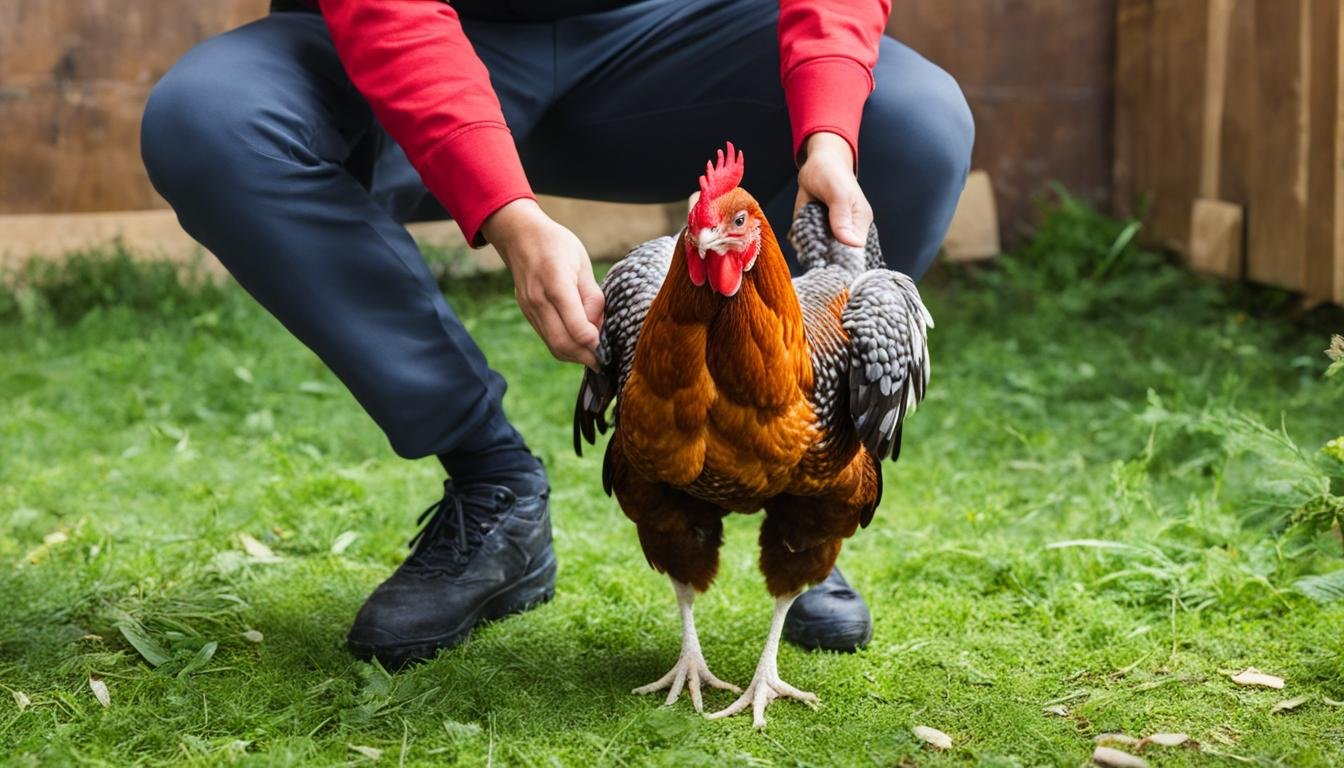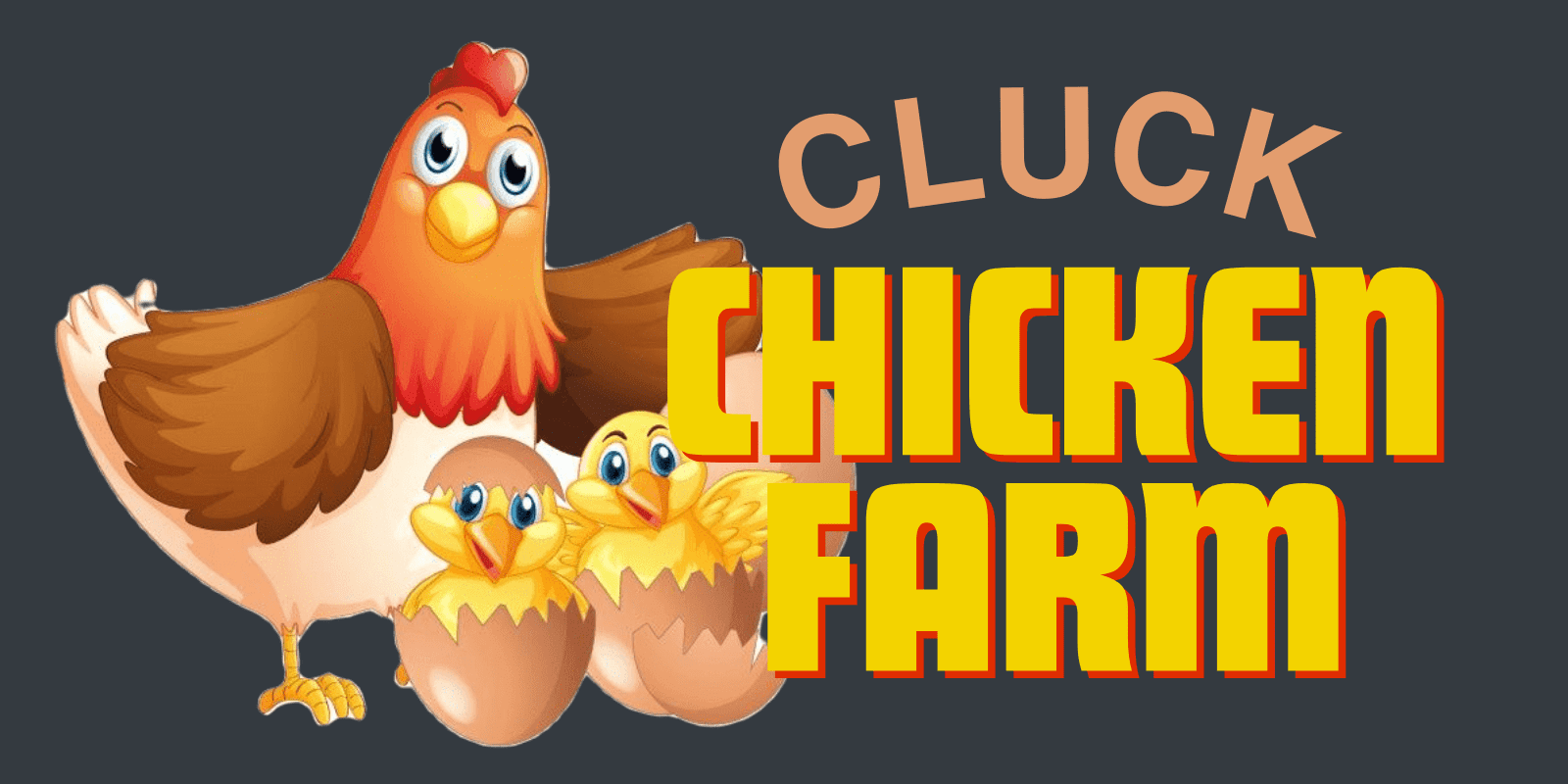Welcome to our comprehensive guide on how to safely handle and hold chickens. Whether you’re a backyard chicken owner or a beginner in poultry care, knowing the proper techniques for chicken handling is crucial for their well-being. In this article, we will provide you with step-by-step instructions on how to hold a chicken, along with essential tips and considerations to ensure their comfort and safety.
The Approach: How to Approach and Encourage Chickens for Holding
Approaching chickens in a calm and gentle manner is essential to ensure their comfort and minimize stress during handling. Follow these tips on how to approach a chicken and encourage them to come closer:
- Lower Yourself: Instead of chasing the chickens, lower yourself to their level. This helps them feel less intimidated and more at ease.
- Offer Food or Treats: To encourage chickens to come closer, offer them some food or treats. This serves as an incentive and motivates them to approach you.
- Coaxing Nervous Chickens: Some chickens may be more nervous or skittish. In such cases, additional coaxing may be required. Be patient and use soothing words or gentle gestures to gain their trust.
- Corral the Chicken: Before attempting to pick up a chicken, it’s best to corral them into a corner or a designated area. This can be done by gently herding them as a flock, rather than singling out individual birds if possible.
Remember, the key is to approach chickens with kindness and respect. Building a positive relationship with the chickens will make the handling process smoother and more enjoyable for both you and the birds.
| Benefits of a Calm Approach | Tips for Holding a Chicken |
|---|---|
| Reduces stress for the chickens | Support the chicken’s body with both hands |
| Fosters trust and better handling experience | Avoid picking up the chicken by its wings, feathers, feet, neck, or under the wings |
| Minimizes the risk of injuries | Lift the chicken towards you by placing both hands firmly over its wings |
Tips for Holding a Chicken:
When holding a chicken, it’s important to follow these tips to ensure their safety and well-being:
- Support the chicken’s body with both hands to prevent any strain or discomfort.
- Avoid picking up the chicken by its wings, feathers, feet, neck, or under the wings, as this can cause injuries and distress.
- Lift the chicken towards you by placing both hands firmly over its wings and around its body.
- Keep the wings of the chicken against its body to prevent flapping and potential injuries.
- Refrain from holding the chicken for extended periods to avoid unnecessary stress.
The Pickup: Proper Technique for Holding a Chicken
When it comes to holding a chicken, it’s crucial to do so with care and using the proper technique. This ensures the chicken’s comfort and minimizes the risk of injuries. There are a few safe and effective methods for picking up a chicken:
- Method 1: Place one hand on each side of the chicken’s body while keeping their wings against them. This provides stability and prevents the chicken from flapping its wings.
- Method 2: Another technique is to place one hand in front of the chicken’s chest to prevent forward movement and use the other hand to hold their back, keeping them still.
Once the chicken is calm and relaxed, you can proceed with lifting them by placing both hands firmly over their wings and around their body, gently lifting them towards you. Remember to avoid picking up a chicken by their wings, feathers, feet, neck, or under their wings, as this can cause discomfort or injury.
Proper chicken holding not only ensures the safety of the chicken but also allows you to handle them comfortably for various purposes, such as health examinations or grooming.
Pros and Cons of Different Chicken Holding Techniques
| Technique | Pros | Cons |
|---|---|---|
| Method 1: Holding by the sides | – Provides stability – Restrains wings effectively | – Requires additional support when lifting – May be challenging for larger chickens |
| Method 2: Holding by the chest and back | – Prevents forward movement – Allows control over the chicken’s body | – May be difficult to restrain wings – Can be less comfortable for chickens |
Handling Large Breed Chickens: Special Considerations
When it comes to handling large breed chickens, there are some special considerations to keep in mind to ensure their safety and well-being. Due to their size and potential for stress, it’s crucial to approach them with caution and use safe restraint techniques. By following these guidelines, you can ensure that both you and your chickens have a positive handling experience.
Safe Restraint Techniques
Safe restraint is essential when handling large breed chickens. It’s important to avoid chasing them, as this can cause unnecessary stress and even lead to health issues. Instead, try to corral them into a corner or tight space where they feel secure. This way, they are less likely to resist or become anxious during the handling process.
If a large breed chicken shows signs of distress or discomfort during restraint, it’s crucial to be prepared to set them down. Their well-being should always be the top priority, and forcing the handling can cause unnecessary harm. Pay close attention to their body language and behavior, and if necessary, gently release them back to their environment.
Special Handling Considerations for Large Breed Chickens
| Handling Aspect | Considerations |
|---|---|
| Restraining Techniques | Corral large breed chickens into a corner or tight space Avoid chasing them to reduce stress Be prepared to release them if they show signs of distress |
| Picking Up | Avoid flipping large breed chickens on their back to prevent respiratory distress or heart attack Use a secure grip with both hands to lift them |
| Handling Environment | Create a calm and quiet environment to minimize stress Avoid sudden movements or loud noises that could startle them Ensure that the handling area is safe and free from hazards |
By being mindful of these special handling requirements, you can provide a comfortable and safe experience for your large breed chickens. Remember, their well-being should always be the top priority, and it’s important to handle them with care and respect.

Health and Safety Considerations for Holding Chickens
When it comes to handling chickens, their health and safety should always be a top priority. By practicing proper chicken handling techniques, you can ensure their well-being and minimize the risk of injury. Here are some important considerations:
Handle Gently
To prevent injury, it is crucial to handle chickens gently. Avoid any rough or sudden movements that may startle or stress them. Treat them with care and respect, just like you would with any other living creature.
Regular Health Examinations
Regular health examinations are essential for monitoring the well-being of your chickens. By conducting simple checks, such as slightly tilting the chicken on its side and resting it in your lap, you can assess their overall health. Look out for signs of stress, such as darkening of the comb or wattles, open-mouth breathing, or struggling. These indicators may warrant further investigation or veterinary attention.
Secure Handling of Large Breed Chickens
Large breed chickens require special handling considerations due to their size and potential for stress. When holding large breeds, it is important to hold them securely against your body to provide support and prevent accidental falls. Be prepared to set them down if they start to struggle, as their safety should always be the priority.
Avoid Flipping Chickens
Flipping chickens on their back should be avoided, especially for large breeds. This position can cause respiratory distress or even lead to a heart attack in some cases. It is best to find alternative methods of handling and restraining chickens that do not put them in a vulnerable position.

| Chicken Health Concerns | Chicken Handling Tips | Chicken Handling Best Practices |
|---|---|---|
| Respiratory issues | Handle chickens gently | Regular health examinations |
| Poor feather condition | Secure handling of large breed chickens | Avoid flipping chickens on their back |
| Parasitic infections |
It is always best to consult with a veterinarian or poultry expert for specific advice on chicken health concerns and handling techniques. By prioritizing the health and safety of your chickens, you can ensure their well-being and build a trusting relationship with them.
Conclusion
Safely handling chickens is essential for their well-being and the well-being of the handler. By following proper chicken handling techniques, you can minimize stress and reduce the risk of injuries. Remember to approach chickens calmly and with patience, using gentle methods to encourage them to come closer. Using the correct holding technique, such as placing one hand on each side of the chicken’s body, prevents injuries and promotes their comfort.
It’s important to be aware of special considerations when handling large breed chickens. Corralling them into a corner or tight space can make handling them safer. Additionally, it’s crucial to watch for signs of distress and release them if needed. Regular health examinations are essential to ensure the overall health of the chickens. By being mindful of their comfort and safety during handling, you can maintain their well-being.
In conclusion, holding chickens safely involves practicing proper techniques and being aware of any special considerations. By taking these precautions, you can ensure the well-being of both the chickens and yourself. Remember to approach them calmly, use the correct holding technique, and prioritize their comfort and safety at all times.





